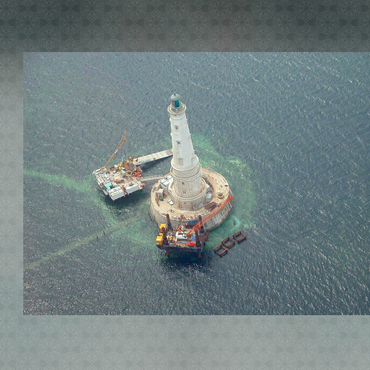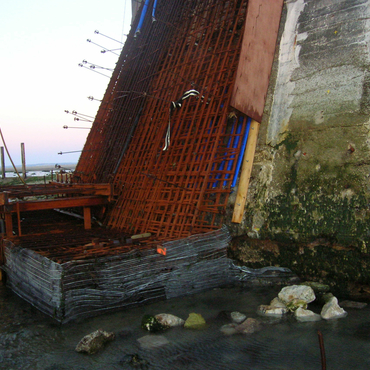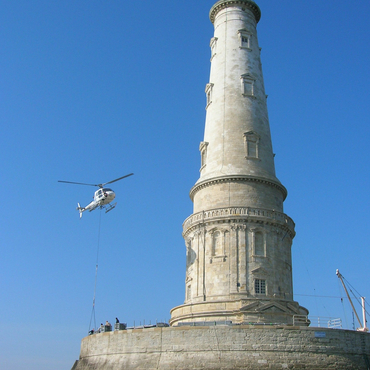
- Home
- King of Lighthouses
- A maintained monument
- A never-ending worksite
Wracked by high tides and scoured by storms, Cordouan is exposed to extreme conditions which mean that the owner, the State, must keep a costly and complex maintenance policy in place. The sea salt eats away at the stone, water seeps in, and moisture threatens the technical areas and the housing areas in the crown that encircles the lighthouse’s beacon. Following extensive renovations, the lighthouse became a classified historic monument in 1862. Its base was strengthened in 1926, but the cement stiffened the structure and sent worrisome vibrations all the way to the top of the tower. Reports issued by the Monuments Historiques regularly alerted the Lighthouse and Beacon Service as to this situation, and an extensive project of work financed by the Ministry of Culture and local authorities was carried out in the 1980s. In the 2000s, two ministries – Culture and Infrastructure/Ecology – and the local authorities agreed on financing for the most urgent and high-profile renovations, which were carried out in 2005 by the Guintoli firm. The section of the lighthouse most exposed to swellsis now protected by a cement shell 70 meters long, 8 meters high and 30 cm thick, placed on a cement base and held in place by 132 steel posts. The subsequent renovation project dealt with the water-tightness of the crown, part of which was financed by the Ministry of Ecology in 2010. The technical difficulties and the costs of working at sea are part of a fundamental shift for the site, daily maintenance of which has been handed over by the Government to SMIDDEST, a mixed association. This signals the end of the permanent presence of keepers from the Lighthouses and Beacons Service. A management plan spelling out a clear vision of the lighthouse's future will free up the resources needed to maintain it, with an eye to applying for UNESCO World Heritage status.




